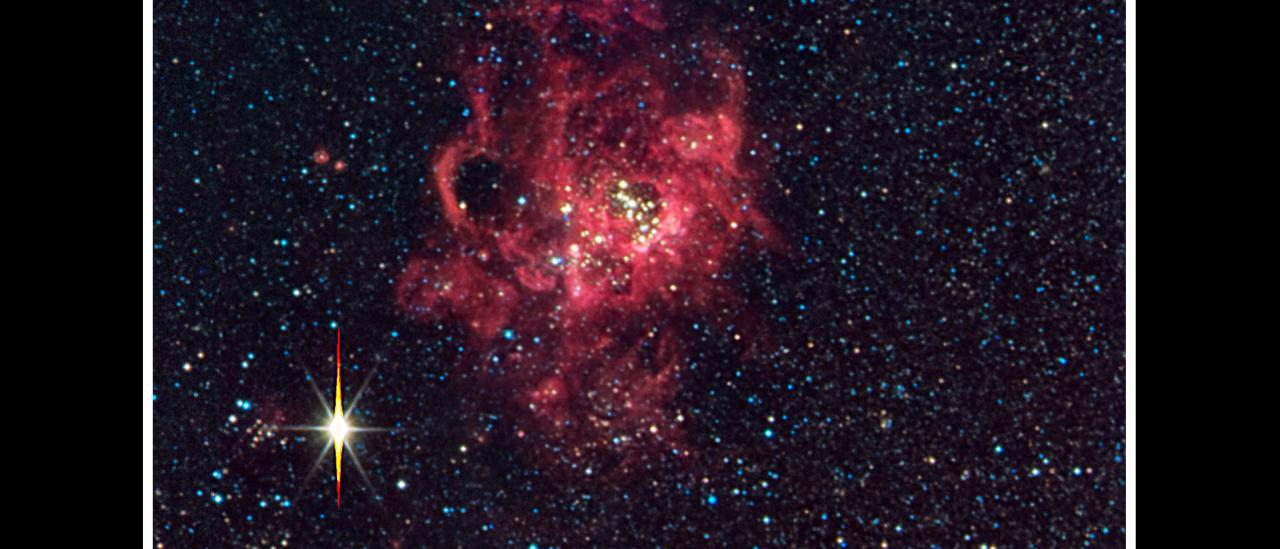The nebula NGC 604 lies in a spiral arm of the nearby galaxy M33, located about 2.7 million light-years away in the direction of the constellation Triangulum. M33 is a member of the Local Group of galaxies that also includes the Milky Way and the Andromeda Galaxy. NGC 604 was discovered William Herschel in 1784 and can be seen with a small telescope. The nebula is a giant star forming region 1500 light-years across. The gas in NGC 604, around nine tenths of it hydrogen, is gradually collapsing under the force of gravity to create the new stars. Once these stars have formed, the vigorous ultraviolet radiation they emit excites the remaining gas in the cloud, making it glow a distinct shade of red. This colour is typical not only of NGC 604 but of other H II regions too. At the heart of NGC 604 are over 200 hot stars, much more massive than our Sun (15 to 100 solar masses) and their surface temperatures are as hot as 40,000 degrees Celsius. They heat the gaseous walls of the nebula making the gas fluoresce. Their light also highlights the nebula's three-dimensional shape, like a lantern in a cavern. By studying the physical structure of a giant nebula, astronomers may determine how clusters of massive stars affect the evolution of the interstellar medium of the galaxy. The nebula also yields clues to its star formation history and will improve understanding of the "starburst" process when a galaxy undergoes a "firestorm" of star formation. The bright stars in NGC 604 are extremely young by astronomical standards, having formed a mere 3 million years ago.
|
Object Name: |
NGC 604 |
|
Telescope: |
Grantecan / Nasmyth-B |
|
Instrument: |
OSIRIS |
|
Filter: |
G (481nm), R (641nm), I (770nm), Z (970nm), OS657 (657nm, FHWM 35nm), OS902 (902nm, FHWM 40nm) |
|
Color: |
Blue (G), Green (Red), Red (I), Yellow (OS657), OS657 and OS902 were added as luminance to get resolution |
|
Exposure: |
3 x 30 secs (G, R, I and Z), 3 x 60 secs (OS657), 3 x 60 secs (OS902) |
|
Field of View: |
Approx. 4' x 5' |
|
Orientation: |
North is up, East is left |
|
Position: |
RA(J2000.0) = 01h34m33s Dec(J2000.0) = +30°47'06" |
